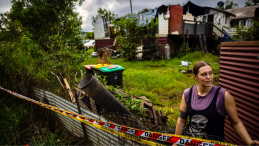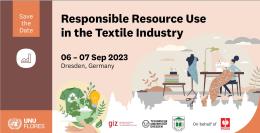Alvaro works as a Senior Project Associate at the Munich Climate Insurance Initiative (MCII) hosted by UNU-EHS. In his work with MCII, he focuses on enhancing and increasing access to risk analytics tools for the most vulnerable in developing countries, through the Economics of Climate Adaptation (ECA) framework, for example. The framework’s main objectives are to support decision makers in building their adaptation strategies and to develop an investment portfolio with climate change adaptation measures that include risk transfer through insurance. Alvaro will attend the NAP Expo that takes place in Santiago, Chile in late March. He explained that in 2023, the expectations for the adaptation community are high, and achievements that support, guide and accelerate adaptation are expected to be delivered by COP28 in Dubai.
What are National Adaptation Plans and why is it a problem that not all countries have them?
In 2010, at COP16 in Cancún, Mexico, the National Adaptation Plan (NAP) process began with what is now known as the Cancun Adaptation Framework (CAF). It enables all countries, but especially developing and least developed ones, to formulate and implement medium to long-term strategies that reflect their adaptation needs, existing adaptation strategies and the issues hindering their progress. Now, thirteen years later, only 15 per cent of countries that were asked to develop National Adaptation Plans have been actually able to submit their plans. To provide guidance and support to the Least Developed Countries (LDCs) in the formulation and implementation of NAPs, the United Nations Framework Convention on Climate Change (UNFCCC) organizes an annual NAP Expo that serves as a forum where different countries, organizations and other relevant actors can interact and exchange related experiences.
How does your research contribute to facilitating the NAP development process?
A component that could boost NAP formulation is proper risk assessment. At national as well as local levels, technical tools to measure and assess risks from different perspectives are missing. We observed that such tools exist, but that they are difficult to access due to insufficient local technical capacities, as well as limited data and infrastructure needed for reliable results that inform decision-making. Within the ECA project, we bridge this access gap and offer a unique approach towards the identification of cost-effective climate change adaptation measures that countries can include in their National Adaptation Plans. The NAP Expo provides an opportunity to present our work, while we can simultaneously learn what others are working on.
Why is it important to include risk assessments in National Adaptation Plans?
Adaptation involves the measures that we take against the impacts of climate change to protect our communities and livelihoods. Adaptation is not only risk management, but risk management is a key element of adaptation. There is a difference between disasters that take place all of a sudden and unexpectedly, such as a tropical storm, and disasters that take longer to build up, such as a drought or sea level rise. Communities need to adapt to both types of disasters, and risk management is important for adapting to both sudden and slow-onset events. Decision makers need to understand what risks are present today and how they will evolve over time. This way they can develop adaptation strategies that include long-term measures, which can be helpful in situations of limited financial or overall resources. To effectively decide how resources should be prioritized and allocated, decision makers need as much information as possible regarding what the biggest risks are. When we do risk assessments there are three main factors to focus on: the probability of an event taking place, the likelihood that the event will impact us, and how bad these impacts can be (vulnerability).
Within ECA, we use an open-source tool to support those countries that still need to develop their National Adaptation Plan with their risk assessments. It has been tested in many contexts and for many hazards in the last ten years, and we are currently expanding its scope to incorporate impacts that are not usually studied, like how disasters affect education, health services, and mobility. It also includes cost-efficiency analyses of adaptation measures to determine the benefits of certain measures over others. Unique within the landscape of solutions that are out there is the bottom-up approach in the framework, because it includes many stakeholders, such as individuals from the private sector, community leaders, local risk management experts, government officials, et cetera. This approach teaches us how various groups respond to risk differently and who therefore need different solutions. It is necessary to work in a more collaborative way that makes the implementation of adaptation measures available to everyone. In a year where so much is expected from the adaptation community, we need to make sure that the most vulnerable have access to the tools they need to make the progress they urgently need.




![smart2[1].png](https://unu.edu/sites/default/files/styles/card_view_small/public/2024-04/smart2%5B1%5D.png?itok=_-ZcLOM5)
